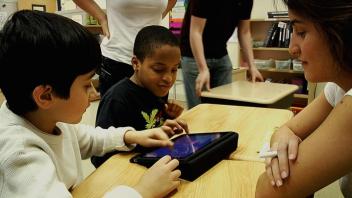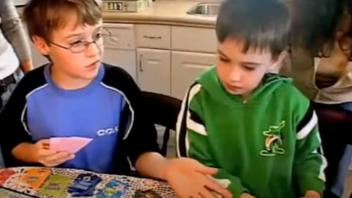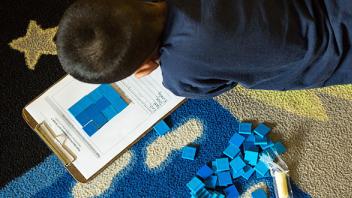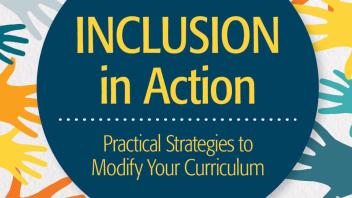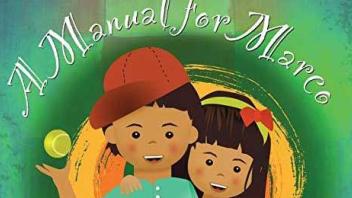10 facts about autism spectrum disorder (ASD)
- According to the CDC, ASD affects about 1 in 36 children in the United States, with more children identified than ever before. In 2016, the reported incidence was 1 in 54 children.
- ASD is about 4 times more likely in boys than girls.
- ASD affects children of all racial, ethnic, and socioeconomic groups.
- ASD is a spectrum disorder, which means that every child with ASD has different skills, challenges, and needs.
- While do not know all of the causes of ASD, we have learned that there are likely many contributing factors, including genes, early brain development, and the environment.
- ASD can be reliably diagnosed by age 2, but children may be diagnosed at earlier ages.
- Early identification of ASD helps children get the services they need.
- There is no “cure” for ASD, but there are several interventions that can help children learn important skills that improve everyday life.
- Typically, the earlier children are diagnosed and receive services, the better their outcomes are.
- Children on the autism spectrum can learn and succeed in the classroom and beyond. Like every child, with the help of their families, providers, doctors, specialists, and communities, kids on the autism spectrum can thrive.
[From the U.S. Department of Health and Human Services, Office of Early Childhood Development]
Person first or identity first? A note about language
Person-first language (PFL) has been the preferred approach for many years — putting the person ahead of the disability diagnosis. Recently, there has been a shift in the autism community, and many prefer to follow identity-first language (IFL) — signifying pride in one’s identity. In this section, we use both PFL (children on the autism spectrum) and IFL (autistic children), to honor both points of view. Learn more here: How to talk and write about autism
Strengths and challenges
Autistic children typically have difficulty with social interaction and communication as well as changes in routines. Many kids also exhibit repetitive behaviors. What can this look like in the classroom?
Social interaction and communication
- Interpreting facial expressions or nonverbal gestures
- Not noticing if others are hurt or upset
- Avoiding eye contact
- Trouble taking turns in a conversation
- Trouble with common social relationships, especially with making friends
Intense interests, inflexibility, and repetitive behaviors
- Repetitive motions, such as flapping hands, rocking body, or spinning around
- Lining up toys or objects and becoming frustrated if the order is changed
- Getting upset if routines are altered
- Obsessive interests, such as an intense focus on a favorite object or a character in a TV show
- Sensitivity to sensory stimuli, for example, can’t tolerate how something looks, sounds, smells, or tastes
It’s important to remember that ASD is a spectrum, and that these characteristics can vary widely among children — from mild to more severe.
Autistic children bring many strengths to the classroom
- Many autistic kids have above-average intelligence
- Ability to learn things in detail and remember information for long periods of time
- Strengths as visual and auditory learners
- Excelling in math, science, music, or art
Brenda Smith Myles: Imagining the ideal classroom for kids on the autism spectrum
ASD and reading
Is learning to read difficult for kids on the autism spectrum? It can be, and autistic children tend to lag behind their peers in reading. Reading requires strong print and decoding skills and strong language comprehension skills. But with explicit systematic instruction and targeted support, many students on the autism spectrum can become skilled readers.
It was commonly thought that children on the autism spectrum learn to decode fairly easily, but can struggle with reading comprehension. Given that poor language skills are a hallmark of ASD and language comprehension skills undergird reading comprehension, this pattern is not surprising.
However, this pattern is not universal and not all autistic children are strong decoders and weak comprehender. A recent study of ASD and reading in school-aged students found all types of reading difficulties across the ASD continuum (McIntyre et al, 2018). Along with the predicted pattern of strong decoding and poor understanding, a large percentage of ASD students had issues with both decoding and language comprehension — in other words, they are what researchers call “garden variety poor readers.”
The bottom line: students on the autism spectrum are more vulnerable to reading comprehension difficulties and remain significantly behind their peers without ASD. So it’s important for families and teachers to learn more about reading development and how to support reading comprehension.
Helping students on the autism spectrum learn to read
Get a true picture of your student’s skill level
Testing can give a portrait of your student’s relative strengths and weak areas in order to plan instruction. Impaired communication and oral language difficulties may make testing more challenging. If your student cannot complete an assessment as it is designed, consider the questions below:
- Does your student understand the oral or written directions?
- Does your student understand what you want them to do on the assessment? You may need to scaffold or provide additional examples, so they understand what is being asked.
- If a student with decoding problems cannot understand a passage that they read, an examiner might read aloud a passage to check comprehension to compare understanding across both types of reading situations.
- Your assessment should include both fiction and expository texts. Some autistic students do better with expository passages. Narrative texts require more language skills to interpret things like dialogue, character traits, and social cues and situations. Expository texts tend to be factual and have fewer social mores and interactions to navigate.
- Children with attention or executive function issues may have more difficulty during timed assessments. The examiner may need to stop the timer and restart or mask distracting information with a card or paper to help a student remain on task.
- All kids have “good” or “bad” days — if a reliable and valid assessment yields a lower than expected score, consider your student’s behavior during testing. Did you note any unusual behaviors? Was your student’s observed behavior consistent with daily classroom performance?
Provide explicit instruction and extra supports
Children on the autism spectrum will likely need additional supports to learn how to read. What works? Using evidence-based techniques to support reading and existing interventions that you know are effective.
Dr. Sylvia Diehl: Adapting teaching strategies for students on the autism spectrum
Explicit instruction helps students on the autism spectrum learn to read through clear and direct explanation of a skill or concept, followed by guided practice and feedback. Explicit instruction can help children with autism to learn and apply specific strategies for reading comprehension, such as making predictions, asking questions, summarizing, and paraphrasing.
Generally speaking, students on the autism spectrum have an easier time learning to decode words, but tend to struggle more with making meaning of texts. Decoding requires accurate and automatic letter-sound skills and the ability to identify and manipulate speech sounds. Reading comprehension requires strong language comprehension skills — such as making inferences, interpreting social meaning of contexts, perspective-taking, and using prior knowledge.
Strategies to support decoding ability
- Use clear simple language and routines
- Give one-step directions
- Follow a gradual release model (I Do, We Do, You Do)
- Include assessment as part of your routine
Strategies to support reading comprehension
Use explicit and direct instruction in comprehension strategies that follow a clear sequence.
- Use read-alouds to teach strategies and practice through listening
- Direct recall is easier than main idea and summarizing
- Build on, and encourage use of, previously taught strategies
Consider the language difficulties that may happen while reading.
Some of the vocabulary in a story may be new. Here’s how to address potential stumbling blocks:
- Pre-teach words
- Draw attention to these words while reading
- Clearly explain homophones or homonyms, which can be confusing (e.g., pear vs. pair)
- Teach figurative language explicitly, including idioms, metaphors, similes, and symbols
- Use context clues
Brenda Smith Myles: Idioms, metaphors, and figures of speech
Talk about the social interactions in a narrative text.
Narratives are full of social interactions and contexts. Before reading with the student, think about social knowledge needed to understand the narrative. What is needed to understand the story? For example:
- Figuring out character traits, behaviors, and feelings may be difficult
- Social background knowledge may be necessary to comprehend
- Conversations between characters can be challenging. Here are some strategies to try:
- Use real life examples to share before and during reading
- Make connections to other movies or TV show
- Connect to other books in the classroom
Dr. Sylvia Diehl: Theory of mind in children on the autism spectrum
Use visual supports to help make thinking concrete.
- Graphic organizers
- Character traits, story maps, plot maps, and compare/contrast charts
- Character maps for each character helps kids remember across longer chapter books and novels
- Anchor charts help keep track of student thinking and are a good visible reminder of repair strategies
- Visual images to support learning new vocabulary. The use of images, symbols, colors, or text can help convey information or instructions.
Consider using peer-mediated instruction.
Peers can act as partners for reading support, for example, you might try a peer-led book club. Peer-mediated instruction can help to improve social skills, motivation, and engagement for reading.
Remember your students’ strengths!
Students on the autism spectrum have strengths in memory, creativity, logic, and visual skills that they bring to the classroom. By using evidence-based practices and creating a welcoming, inclusive classroom, autistic kids can achieve their full potential as readers and learners.
Dr. Sylvia Diehl: High expectations and positive feedback
Learn more about inclusive classrooms
Inclusive classrooms are welcoming and support the diverse academic, social, emotional, and communication needs of all students. Learn more about what inclusion is, how it can benefit all learners, and how to implement an inclusion program in your classroom and school-wide. Inclusive Classrooms
Personal stories
Autism Spectrum Disorder
Public School, Private School, Homeschooling: One Family’s Story with Autism
Autism Spectrum Disorder
The Human Brain Is a Storytelling Brain
Autism Spectrum Disorder
Eric Garcia
Our video interview with journalist and autism advocate Eric Garcia.
Voices of experts
More about teaching kids on the autism spectrum
Autism Spectrum Disorder
For General Education Teachers: Helpful Questions to Ask About Students on the Autism Spectrum
Autism Spectrum Disorder
A Teacher’s Brief Guide to Teaching Students with High-Functioning Autism
Autism Spectrum Disorder
Including Literacy Instruction in Daily Schedules for Students with Autism
Autism Spectrum Disorder
Supporting the Literacy Development of Students with Autism
Autism Spectrum Disorder
Exploring Theory of Mind, Weak Central Cohesion, and Executive Functioning in ASD
Social-Emotional Learning
Beyond the Story Map
Autism Spectrum Disorder
Tell Me About the Story: Comprehension Strategies for Students on the Autism Spectrum
Launching Young Readers Series
From Emotion to Comprehension
Autism Spectrum Disorder
“I Can Do It Myself!” Using Work Systems to Build Independence in Students on the Autism Spectrum
Autism Spectrum Disorder
Structured Teaching Strategies for Students on the Autism Spectrum
Autism Spectrum Disorder
Recognizing Different Types of Readers on the Autism Spectrum
Autism Spectrum Disorder
Why Everyone Benefits from Including Autistic Students in Literacy Classrooms
Autism Spectrum Disorder
Advice from Autistic Adults About Literacy Instruction
Organizing your classroom
Autism Spectrum Disorder
Clean Up Your Act! Creating an Organized Classroom Environment for Students on the Spectrum
Autism Spectrum Disorder
Make the Classroom Sensory-Friendly Today
Autism Spectrum Disorder
Making the Most of Morning Meeting for Students with Autism
Books about teaching kids on the autism spectrum
Themed Booklist
About Autism: Books for Parents and Educators
Themed Booklist
In the Classroom: Teaching Children on the Autism Spectrum
Themed Booklist
The Inclusive Classroom: Books for Educators
Children’s books featuring autistic characters
Themed Booklist
Middle Grade Books Featuring Neurodiverse Characters
Themed Booklist
Picture Books Featuring Characters with Autism or Asperger’s
Themed Booklist
My Autism Story: Books for Children and Teens
Browse our ASD resource library
Learn more about ASD, including early warning signs, support for parents, the PBS autism awareness initiative, and research briefs. Visit our Autism Spectrum Disorder section








